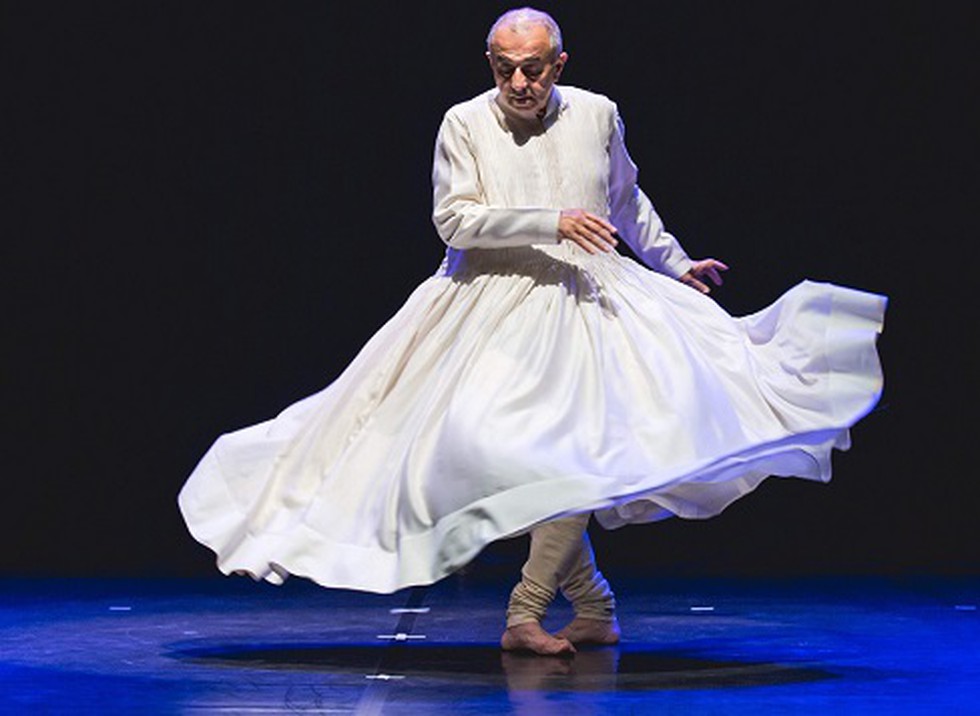GREAT INDIAN BUSTARDS
The Ministry of Environment along with the Wildlife Conservation Society, India, has come up with a unique initiative — a “firefly bird diverter” for overhead power lines in areas where Great Indian Bustard (GIB) populations are found in the wild.

About:
- The GIB is one of the most critically threatened species in India, with fewer than 150 birds left in the wild. It is listed as Critically Endangered in IUCN Red List.
- A 2019 report by the Ministry pointed out that power lines, especially high-voltage transmission lines with multiple overhead wires, are the most important current threat for GIBs in the Thar region, and are causing unsustainably high mortality in about 15% of their population.
- Firefly bird diverters are flaps installed on power lines. They work as reflectors for bird species like the GIB. Birds can spot them from a distance of about 50 metres and change their path of flight to avoid collision with power lines.
- The firefly detectors have been installed along two stretches of approximately 6.5 km, selected between Chacha to Dholiya villages in the Pokhran tehsil, Rajasthan.
- The diverters are called fireflies because they look like fireflies from a distance, shining on power lines in the night.
F/A-18 SUPER HORNET FIGHTER JETS
Boeing announced the successful demonstration of the compatibility of its F/A-18 Super Hornet fighter jets with the Indian Navy’s aircraft carriers as part of its pitch for the Navy’s fighter procurement.

About:
- The demonstrations were held in coordination with U.S. Navy on a shore-based facility at the Naval Air Station Patuxent river in Maryland, U.S.
- The demonstrations show that the F-18 Super Hornet would do well with the Indian Navy’s Short Take-off but Arrested Recovery (STOBAR) system and validate earlier simulation studies done over the last two years.
- As a part of Boeing’s proposed “By India, for India” sustainment program, the Block III Super Hornets could be serviced in partnership with the Indian Navy as well as India and U.S. based partners throughout the life cycle of the aircraft.
ABDUL RAHIM KHAN-I-KHANA
Rahim Khan’s tomb was opened to the public after six years of restoration work — perhaps the largest conservation project ever undertaken for any monument of national importance in India.

About:
- Abdul Rahim Khan-i-Khanan (1556 – 1627), popularly known as simply Rahim, was a poet who lived in India during the rule of Mughal emperor Akbar.
- Abdul Rahim was the son of Bairam Khan, Akbar's trusted guardian and mentor.
- He was one of the nine important ministers (dewan) in his court, also known as the Navaratnas.
- Rahim is known for his Hindi dohe (couplets) and his books on astrology.
- Apart from writing various dohas, Rahim translated Babar's memoirs, Baburnama from Chagatai language to Persian language.
- He had an excellent command over the Sanskrit language. In Sanskrit, he wrote two books on astrology, Khetakautukam and Dwatrimshadyogavali.
- The village of Khan Khana, which is named after him, is located in the Nawanshahr district of Punjab.
ASTAD DEBOO
Astad Deboo died in Mumbai aged 73 , a month after being diagnosed with non-Hodgkins lymphoma.

About:
- Astad Deboo (1947 – 2020) was an Indian contemporary dancer and choreographer.
- He was considered a pioneer of modern dance in India.
- He was introduced to Kathak by Guru Prahlad Das when he was six. He later learnt Kathakali under Guru E. Krishna Panicker and mastered the modern dance techniques of Martha Graham and Jose Limon in London and New York.
- He collaborated with several international artists including Pina Bausch, Alison Becker Chase and Pink Floyd.
- He was awarded the Sangeet Natak Akademi Award in 1996 and Padma Shri in 2007.
BREAKDANCING
Breakdancing became an official Olympic sport.

About:
- The International Olympic Committee’s pursuit of urban events to lure a younger audience saw street dance battles officially added to the medal events program at the 2024 Paris Games.
- Also confirmed for Paris by the IOC executive board were skateboarding, sport climbing, and surfing.
- Breakdancing was proposed by Paris organizers almost two years ago after positive trials at the 2018 Youth Olympics in Buenos Aires.
WHO’S 2019 GLOBAL HEALTH ESTIMATES
The WHO’s 2019 Global Health Estimates, released recently, said non-communicable diseases now make up 7 of the world’s top 10 causes of death, an increase from 4 of the 10 leading causes in 2000. The new data cover the period from 2000 to 2019.

About:
- Heart disease has remained the leading cause of death at the global level for the last 20 years.
- Heart disease now represents 16 per cent of total deaths from all causes and the number of deaths from heart disease increased by more than two million since 2000 to nearly 9 million in 2019.
- Diabetes and dementia are also among the world’s top 10 causes of death.
- While more non-communicable diseases are now causing deaths worldwide, there has been a global decline in deaths from communicable diseases, which however still remain a major challenge in low- and middle-income countries.
- In 2019, pneumonia and other lower respiratory infections were the deadliest group of communicable diseases and together ranked as the fourth leading cause of death.
- HIV/AIDS dropped from the 8th leading cause of death in 2000 to the 19th in 2019.
- Tuberculosis is also no longer in the global top 10, falling from 7th place in 2000 to 13th in 2019, with a 30% reduction in global deaths.
- The estimates further confirm the growing trend for longevity: in 2019, people were living more than 6 years longer than in 2000, with a global average of more than 73 years in 2019 compared to nearly 67 in 2000.
INDIA WORKPLACE EQUALITY INDEX
The ‘India Workplace Equality Index’, touted as the country’s first comprehensive benchmarking tool for employers to measure their progress on LGBT+ inclusion at the workplace, was launched.

About:
- Hotelier-activist Keshav Suri through his non-profit Keshav Suri Foundation, partnered with Pride Circle, Stonewall UK and FICCI, to bring the IWEI to India Inc.
- It’s first report announced winners from among 65 companies which shared data on their diversity and inclusion practices. 21 firms won under the gold category, while 18 were placed under silver and 13 got bronze.
- The index measures nine areas: policies and benefits, employee lifecycle, employee network group, allies and role models, senior leadership, monitoring, procurement, community engagement and additional work.
EXTREME WEATHER EVENT HOTSPOTS
Over 75 per cent districts in India, home to more than 63.8 crore people, are hotspots of extreme climate events such as cyclones, floods, droughts, heat and cold waves, according to a study released by the Council on Energy, Environment and Water (CEEW).

About:
- This is the first time that extreme weather event hotspots in the country have been mapped.
- The frequency, intensity, and unpredictability of these extreme events have risen in recent decades. While India witnessed 250 extreme climate events in 35 years between 1970 and 2005, it recorded 310 such weather events in only 15 years since then, the study has pointed out.
- In the last 50 years, the frequency of flood events increased almost eight times. Events associated with floods such as landslides, heavy rainfall, hailstorms, thunderstorms, and cloudbursts increased by over 20 times.
- Six of India’s eight most flood-prone districts in the last decade—Barpeta, Darrang, Dhemaji, Goalpara, Golaghat, Sivasagar—are in Assam.
- The yearly average of drought-affected districts increased 13 times after 2005. Nearly 68 per cent of the districts have faced droughts and drought-like situations.
- Drought-affected district hotspots of India in the last decade were Ahmednagar, Aurangabad (both Maharashtra), Anantapur, Chittoor (both Andhra Pradesh), Bagalkot, Bijapur, Chikkaballapur, Gulbarga, and Hassan (all Karnataka).
- The study also found a shift in the pattern of extreme climate events, such as flood-prone areas becoming drought-prone and vice-versa, in over 40 per cent of Indian districts.
MINI KAZIRANGA
Too many cattle are robbing the one-horned rhinos of Assam’s Pobitora Wildlife Sanctuary, referred to as ‘Mini Kaziranga’ for similar features, of their nutritious food.

About:
- Pobitora Wildlife Sanctuary is situated in the flood plains of River Brahmaputra in the district of Morigaon and about 45 kms from Guwahati, the capital of Assam.
- In 1987, Pobitora was declared a wildlife sanctuary.
- Pobitora wildlife sanctuary harbors the highest density of Rhinoceros in the world and second highest concentration of Rhinoceros in Assam after Kaziranga National Park.
- It is an Important Bird Area and home for more than 2000 migratory birds and various reptiles.
UN POPULATION AWARD FOR 2020
HelpAge India has been presented the UN Population Award for 2020 (institutional category), according to a release issued by UNFPA.

About:
- Established by the United Nations General Assembly in 1981, the United Nations Population Award recognises contributions in the fields of population and reproductive health.
- The Committee for the United Nations Population Award, which made the selections, is chaired by Ion Jinga, the permanent representative of Romania to the United Nations, and is composed of representatives of nine other UN Member States.
- For the first time in the history of the UN Population Award, the honour is being conferred on an Indian institution.
- HelpAge India, which has been working for ‘the cause and care of disadvantaged older persons to improve their quality of life’ for over four decades, is the first Indian institution to receive this award.
- The last time the Award came to an Indian was 28 years ago, back in 1992, when it was awarded to Mr. J.R.D. Tata as an individual laureate.
Comments
Post a Comment